Space-time wiring specificity supports direction selectivity in the retina
- PMID: 24805243
- PMCID: PMC4074887
- DOI: 10.1038/nature13240
Space-time wiring specificity supports direction selectivity in the retina
Abstract
How does the mammalian retina detect motion? This classic problem in visual neuroscience has remained unsolved for 50 years. In search of clues, here we reconstruct Off-type starburst amacrine cells (SACs) and bipolar cells (BCs) in serial electron microscopic images with help from EyeWire, an online community of 'citizen neuroscientists'. On the basis of quantitative analyses of contact area and branch depth in the retina, we find evidence that one BC type prefers to wire with a SAC dendrite near the SAC soma, whereas another BC type prefers to wire far from the soma. The near type is known to lag the far type in time of visual response. A mathematical model shows how such 'space-time wiring specificity' could endow SAC dendrites with receptive fields that are oriented in space-time and therefore respond selectively to stimuli that move in the outward direction from the soma.
Figures





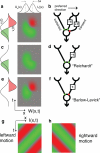

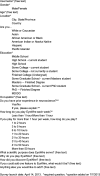


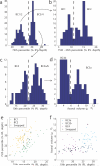
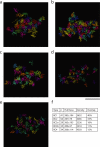
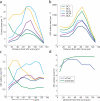


Comment in
-
Science and Culture: Putting a game face on biomedical research.Proc Natl Acad Sci U S A. 2016 Jun 14;113(24):6577-8. doi: 10.1073/pnas.1607585113. Proc Natl Acad Sci U S A. 2016. PMID: 27302944 Free PMC article. No abstract available.
References
-
- Borst A, Euler T. Seeing things in motion: models, circuits, and mechanisms. Neuron. 2011;71:974–94. - PubMed
-
- Vaney DI, Sivyer B, Taylor WR. Direction selectivity in the retina: symmetry and asymmetry in structure and function. Nat. Rev. Neurosci. 2012;13:194–208. - PubMed
-
- Euler T, Detwiler PB, Denk W. Directionally selective calcium signals in dendrites of starburst amacrine cells. Nature. 2002;418:845–52. - PubMed
-
- Yonehara K, et al. The first stage of cardinal direction selectivity is localized to the dendrites of retinal ganglion cells. Neuron. 2013;79:1078–85. - PubMed
Publication types
MeSH terms
Grants and funding
LinkOut - more resources
Full Text Sources
Other Literature Sources
Miscellaneous

